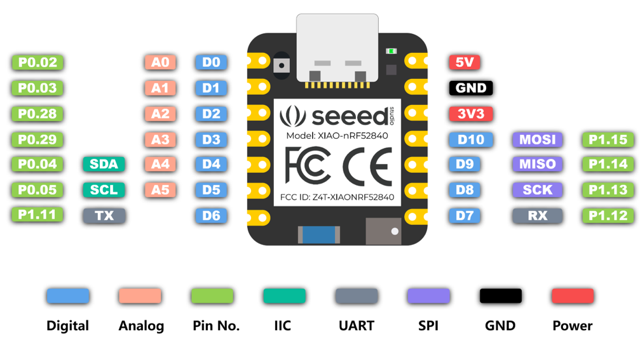I tried to do it like this:
- look for hardware-pin on seeed-schema
- look for same pin on feather-schema
- use pin-number of feather
- example: A4 → P0.04 → 14/A0

However, this does not work for certain pins, as I do not find them on the Adafruit-schematic.
For example, D9 / P1.14 does not exist on Adafruit.
I am really lost, any help appreciated
